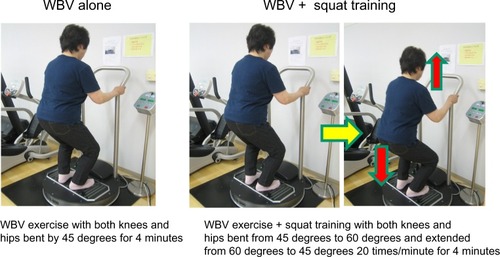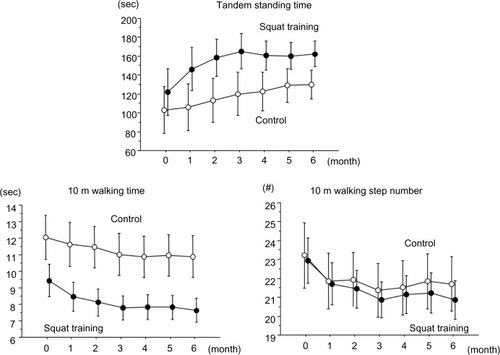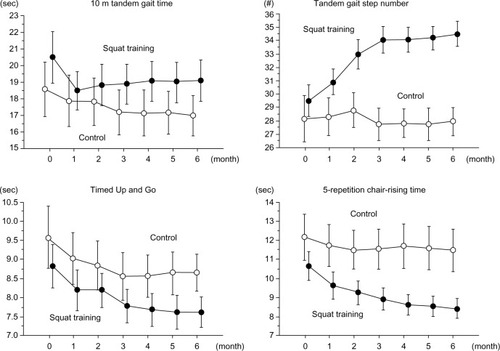Figures & data
Figure 1 WBV exercise and squat training. WBV exercise was performed using a Galileo machine (G-900; Novotec, Pforzheim, Germany). The subject stands with knees bent (by 45 degrees) and hips bent (by 45 degrees), with feet 20 cm apart on a rocking platform with a sagittal axle that alternately thrusts the right and left legs upwards and downwards, thereby activating the muscles of the lower extremities. Each WBV exercise session was set at a frequency of 20 Hz and for a duration of 4 minutes. In the control group, only WBV exercise was performed. In the squat training group, squat training was added on the rocking platform of the Galileo machine during the 4-minute WBV exercise session.

Table 1 Baseline characteristics of study subjects
Table 2 Baseline physical function–body balance, muscle power, and walking ability indices
Figure 2 Changes in static body balance and walking ability parameters. The data are expressed as the mean ± standard error. A one-way analysis of variance with repeated measurements showed that all parameters improved significantly from baseline values in both groups. However, a two-way analysis of variance with repeated measurements showed that improvement of one-leg standing time, but not tandem standing time, 10 m walking time, and 10 m walking step number, was significantly greater in the squat training group than in the control group.

Figure 3 Changes in dynamic body balance and muscle power parameters. The data are expressed as the mean ± standard error. A one-way analysis of variance with repeated measurements showed that all parameters improved significantly from baseline values in the squat training group, whereas 10 m tandem gait time and TUG improved significantly from baseline values in the control group. Tandem gait step number and 5-repetition chair-rising time improved significantly from baseline values in the squat training group compared with the control group.

Table 3 One- and two-way ANOVAs with repeated measurements (P-values)
